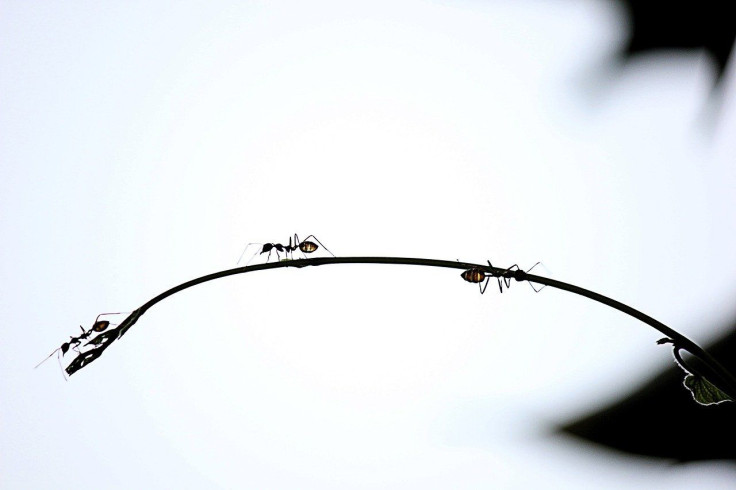Invasive Ant With Painful Sting Spotted In Indiana [Photo]
KEY POINTS
- The Asian needle ant was recently spotted in Southern Indiana
- Its sting can cause "intense pain" that may come and go "for several hours": USDA
- In some cases, it can cause life-threatening anaphylaxis
An invasive ant with a painful sting has been spotted in Indiana for the first time.
The Asian needle ant was recently discovered in the Evansville area in Southern Indiana, Purdue University entomologist Timothy Gibb told the Indianapolis Star. While the species has been observed in more southern states such as Georgia and Florida, this is said to be the "furthest north" that the species has been spotted.
Perhaps the most striking trait of the species is its painful sting. Unlike the other ant species in the area, Asian needle ants actually have a stinger and a venom sac.
"Stings are often reported to result in intense pain at the site of the sting that comes and goes over the course of several hours," the U.S. Department of Agriculture (USDA) said. "Some people experience pain away from the sting site. Redness of the skin and mild to severe urticaria (hives) are reported as symptoms."
"In most cases, it's just going to hurt like crazy," Gibb told the Indianapolis Star. "Other ants will bite, but this is really new."
Timothy Gibb, a Purdue University entomologist, says the Asian needle ant was recently discovered in the Evansville area, and that's the furthest north the ant has ventured.https://t.co/MgCWIrC1WF
— ABC 7 Amarillo (@ABC7Amarillo) March 15, 2022
However, there may also be cases when "it can be lethal," for instance if the individual who got stung is "hyper-allergic" to insect stings. According to the USDA, Asian needle ant stings may cause anaphylaxis or a life-threatening allergic reaction. This may cause symptoms such as constriction of the airway, weak and rapid pulse, low blood pressure or fainting.
Those who suspect they may be experiencing anaphylaxis from the sting of an Asian needle ant should seek medical attention. Gibb also recommends those allergic to such stings to have an EpiPen handy.
The entomologist noted that people should not panic and instead should educate themselves about the possible dangers of the invasive species.
Invasive species
The species was first reported in the U.S. in the early 1930s, but the Asian needle ant was recognized as a pest only in 2006, according to North Carolina State University (NC State). The species largely went "unnoticed" for many years, and researchers only began to understand the impacts of the species' invasion in recent decades.
For instance, the species can displace other ant species in the area they have invaded. Some of the species that they tend to displace are the ones that are important for dispersing seeds.
"Researchers have demonstrated substantial decreases in seed dispersal where Asian needle ants have invaded forest areas," the USDA noted. "Thus, this invasive species could have dramatic, long-term negative effects on the forest understory."
The invasive species is also quite "unusual" compared to other pest ants. This is because, unlike the other pest ants, they can nest in natural areas, as well as in areas that are disturbed by human activity. This means they can proliferate in areas close to people.
This trait not only gives them more protection from extreme temperatures, but also increases their chances of spreading to more places, Gibb explained.
In terms of their capability to inflict painful stings, NC State noted that the ants generally "flee" from humans as they are not as aggressive as fire ants. However, they tend to sting upon accidental contact.
As such, anyone handling an area that might be infested with the species is advised to wear thick gloves.

© Copyright IBTimes 2025. All rights reserved.






















